What is Reclined Bound Angle Pose?
The Reclined Bound Angle Pose, or Supta Baddha Konasana, is a restorative yoga posture that gently opens the hips and stretches the inner thighs, groins, and knees. To perform this pose, lie on your back, bend your knees, and bring the soles of your feet together, allowing your knees to drop out to the sides. This asana encourages deep relaxation and promotes a sense of calm, making it ideal for stress relief and meditation. Props like blankets or blocks can be used under the knees for additional support and comfort. Practicing this pose regularly can enhance flexibility in the hips and improve circulation in the pelvic area.
Position type: Reclined
Posture type: Supine
Ideal for: Flexibility
Targets: Abdomen, Back, Hips and Legs
Pose level: Beginner
How to prepare for the Reclined Bound Angle Pose?
- Hips and inner thighs: Begin with hip-opening stretches such as Butterfly Pose, Pigeon Pose (Kapotasana), and Garland Pose (Malasana) to loosen tightness in the hips and inner thighs. These stretches create space and flexibility, aiding in the comfortable practice of Reclined Bound Angle Pose.
- Knees and ankles: Perform gentle knee and ankle movements like circles and rotations to increase mobility and reduce strain in these joints, as Reclined Bound Angle Pose requires the knees to open wide and the feet to come together.
- Lower back: Practice poses that gently stretch and strengthen the lower back, such as Cat-Cow Pose (Marjariasana) and Child’s Pose (Balasana). These poses help prepare the lower back for the reclining aspect of the pose, ensuring a comfortable and supportive experience.
How to do Reclined Bound Angle Pose?
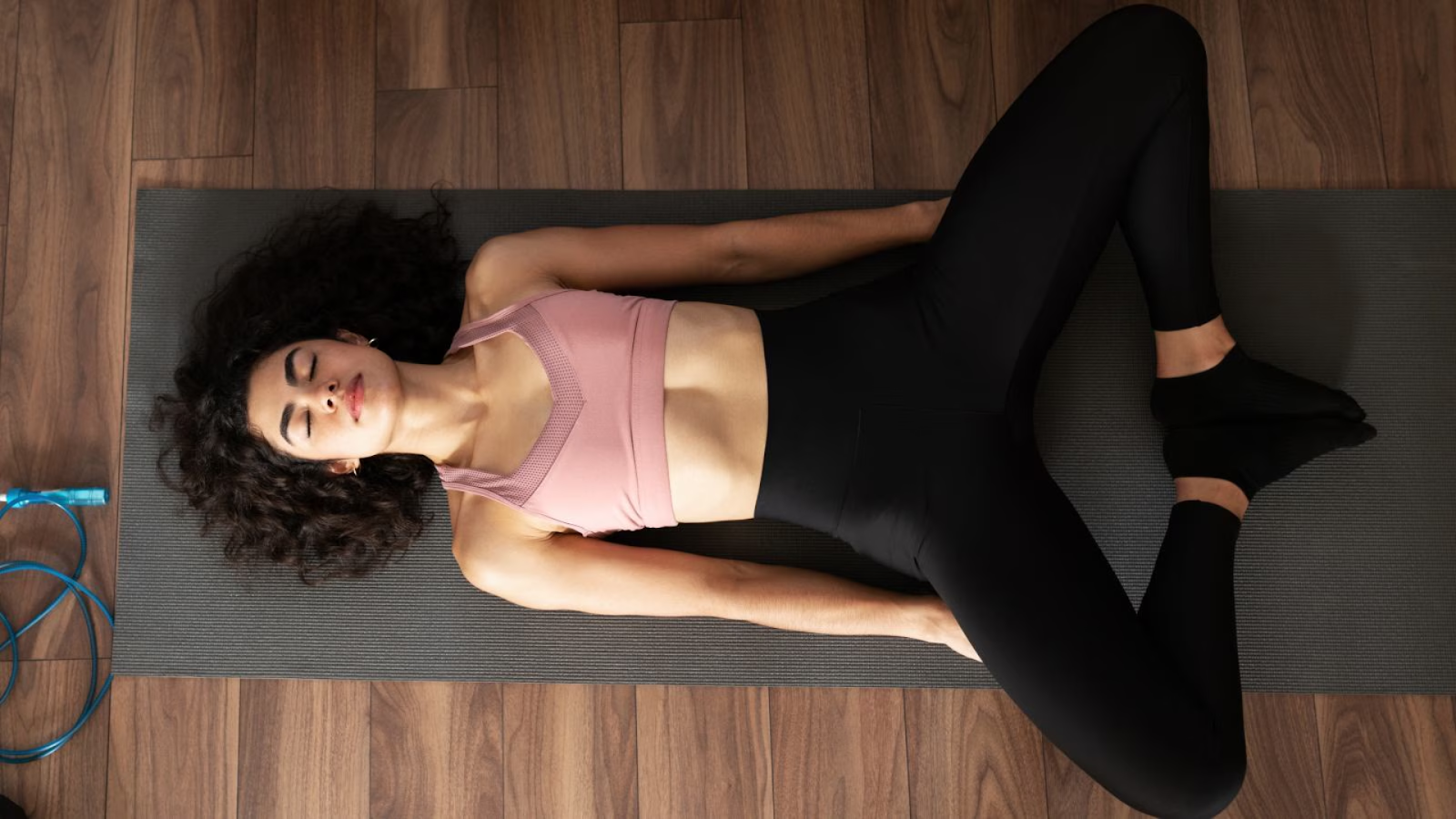
Getting into the pose:
- Sit on the floor with your legs extended in front of you.
- Bend your knees, bringing the soles of your feet together. Let your knees drop out to the sides, forming a diamond shape with your legs. Draw your heels as close to your pelvis as comfortable.
- Slowly lower your back towards the floor, using your hands for support if needed, until you're lying down. You can place a bolster or cushion along your spine for extra support.
- Allow your arms to rest by your sides, palms facing up. Ensure your shoulders are relaxed and your back is comfortably settled on the floor or support.
- Place blankets or blocks under your knees if they don't comfortably reach the floor. You can also use a small pillow under your head if needed.
- Close your eyes and take deep, slow breaths. Focus on relaxing your muscles and letting go of any tension. Hold the pose for several minutes, staying mindful of your breath and body sensations.
Getting out of the pose:
- Gently bring your knees together using your hands for support. Roll to one side into a fetal position before slowly sitting up.
Key Alignments in Reclined Bound Angle Pose: In Supta Baddha Konasana focus on maintaining a neutral spine and relaxing the shoulders down away from the ears. Ensure your lower back is comfortably supported, using a bolster or blanket if needed, to avoid any strain. The soles of the feet should be pressed together with the heels close to the pelvis, while the knees drop out to the sides, supported by props if they don't comfortably reach the floor. Keep your arms relaxed by your sides with palms facing up, promoting an open and receptive chest.
What are the benefits of Reclined Bound Angle Pose?
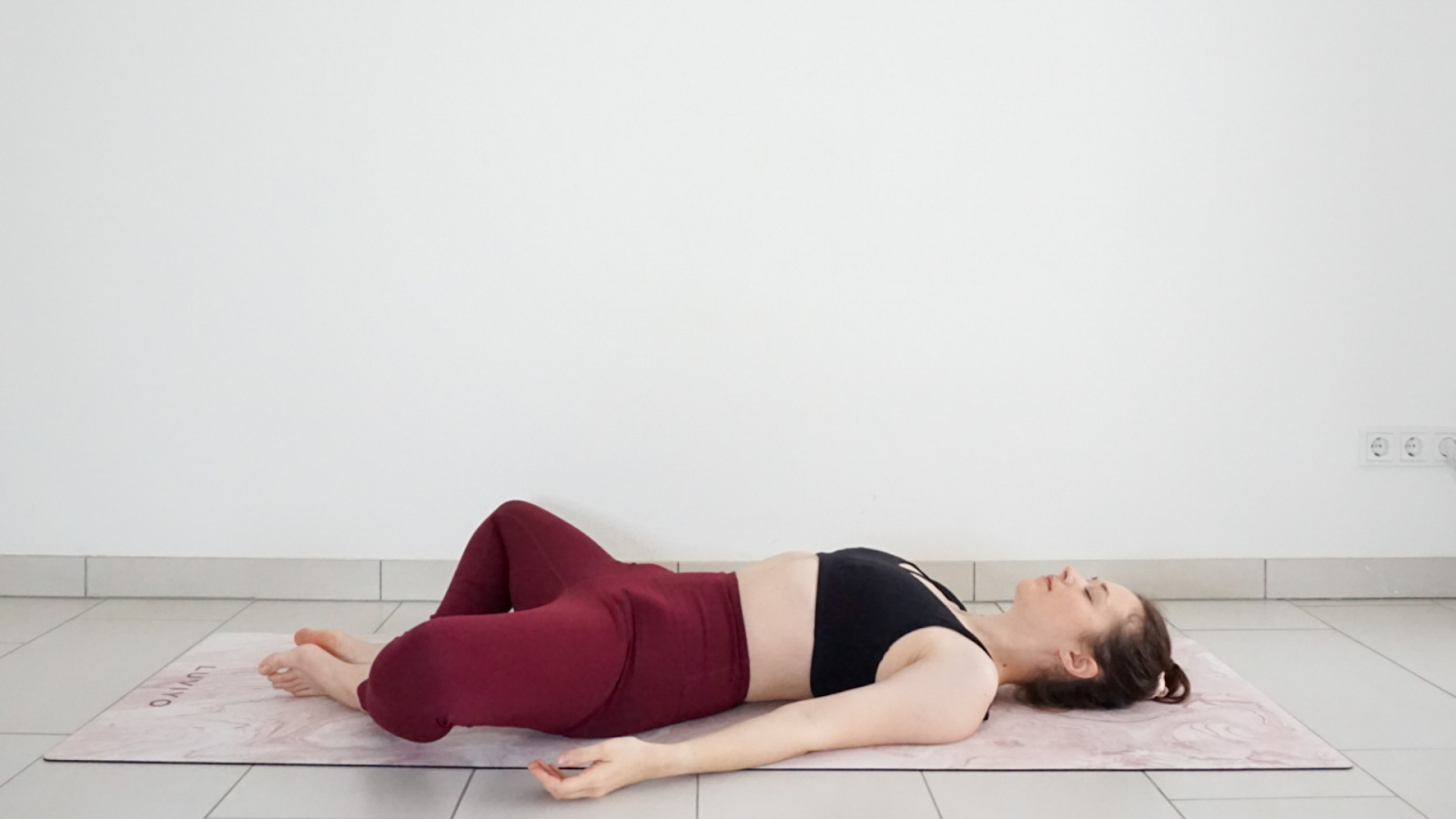
Reclined Bound Angle Pose or Supta Baddha Konasana offers numerous physical and mental benefits, making it a valuable addition to any yoga practice. Physically, it gently stretches the inner thighs, groins, and knees, promoting flexibility and relieving tension in these areas. The pose also encourages blood circulation to the pelvic region, which can aid in reproductive and digestive health. Mentally, this restorative pose induces deep relaxation and stress relief, making it ideal for calming the mind and reducing anxiety. The supported, reclining nature of the pose allows for a meditative state, enhancing mindfulness and promoting a sense of inner peace. Additionally, by opening the chest and heart area, it can improve respiratory function and foster a sense of emotional openness and release.
What are the contraindications of Reclined Bound Angle Pose? Anyone with knee or hip injuries should approach this pose with caution or avoid it altogether, as the wide opening of the hips and the position of the knees can exacerbate discomfort or strain. Pregnant women should also exercise caution and seek guidance from a qualified instructor, as modifications may be necessary. Those with lower back issues should use additional support under the spine to avoid excessive strain.
Counterposes of Reclined Bound Angle PosePractice Corpse pose or Svanasana for a few minutes by straightening the legs after doing Reclined Bound Angle Pose.
Variations of Reclined Bound Angle Pose
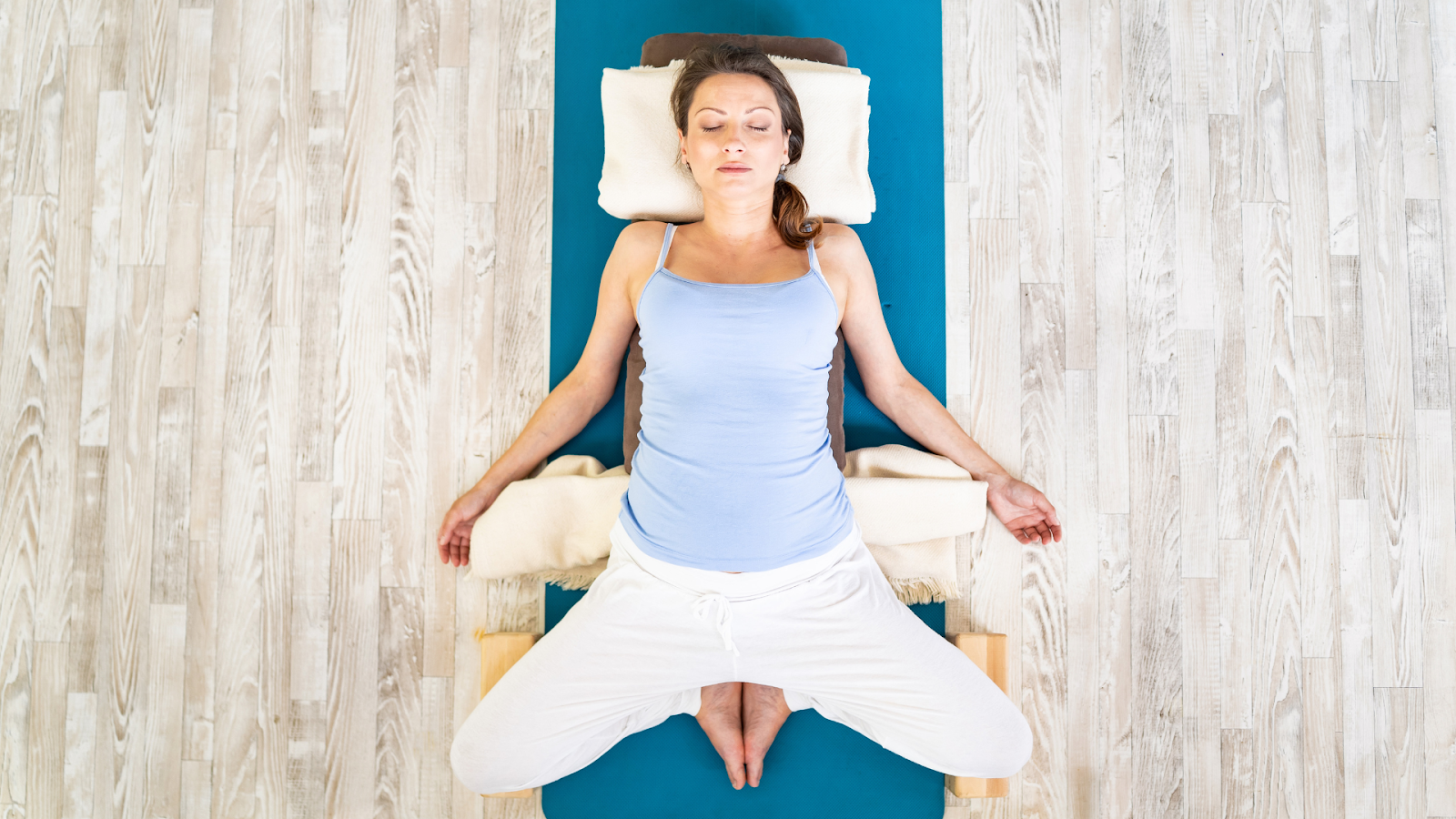
Supported Reclined Bound Angle Pose:
- Use a bolster, rolled blanket, or pillow under your back for added support and comfort.
- Lie back over the prop, ensuring it supports your spine from the lower back to the head.
- Allow your arms to rest comfortably by your sides or on your abdomen for added relaxation.
Legs Up Reclined Bound Angle Pose:
- Lie on your back with your legs in a Bound Angle Pose position (soles of feet together, knees wide).
- Lift your legs up one at a time, keeping the knees bent and the soles of your feet pressing together.
- Support your legs against a wall or use a chair for added stability and ease in maintaining the pose.
- Relax your arms by your sides or on your abdomen, focusing on deep breathing and relaxation.
Advice for BeginnersFor beginners attempting Reclined Bound Angle Pose, it's important to start gradually and listen to your body's limits. Use props like blankets or pillows under your knees and back for added support and comfort. Focus on relaxing into the pose rather than forcing any stretches. Remember to breathe deeply and steadily throughout the practice to enhance relaxation and ease tension. Over time, as flexibility improves, you can explore deeper variations of the pose under the guidance of a qualified yoga instructor.
Shvasa tips:
- Support: Use props like blankets, bolsters, or blocks to make the pose more comfortable.
- Warm-up: Ensure you are warmed up before attempting this pose to avoid straining your muscles.
- Breathing: Focus on deep, steady breaths. This will allow you to relax more deeply.
Learn how to practice Supta Baddha Konasana the right way, with modification and props, from an experienced teacher LIVE on Shvasa.
Meta Description: How to do the Reclined Bound Angle Pose, with step-by-step instructions, benefits, contraindications and modifications. Summary: The Reclined Bound Angle Pose is a restorative yoga posture that gently opens the hips and stretches the inner thighs, groins, and knees. Practicing this pose regularly can enhance flexibility in the hips and improve circulation in the pelvic area.
FAQs:
- What are the benefits of Reclined Bound Angle Pose?
Reclined Bound Angle Pose gently stretches the inner thighs, groins, and knees, promoting flexibility and relieving tension in these areas. The pose also encourages blood circulation to the pelvic region, which can aid in reproductive and digestive health. Mentally, this restorative pose induces deep relaxation and stress relief, making it ideal for calming the mind and reducing anxiety. The supported, reclining nature of the pose allows for a meditative state, enhancing mindfulness and promoting a sense of inner peace.
- What are the contraindications of Reclined Bound Angle Pose?
Anyone with knee or hip injuries should approach this pose with caution or avoid it altogether, as the wide opening of the hips and the position of the knees can exacerbate discomfort or strain. Pregnant women should also exercise caution and seek guidance from a qualified instructor, as modifications may be necessary. Those with lower back issues should use additional support under the spine to avoid excessive strain.
- How to do Reclined Bound Angle Pose?
- Sit on the floor with your legs extended in front of you.
- Bend your knees, bringing the soles of your feet together. Let your knees drop out to the sides, forming a diamond shape with your legs. Draw your heels as close to your pelvis as comfortable.
- Slowly lower your back towards the floor, using your hands for support if needed, until you're lying down. You can place a bolster or cushion along your spine for extra support.
- Allow your arms to rest by your sides, palms facing up. Ensure your shoulders are relaxed and your back is comfortably settled on the floor or support.
- Place blankets or blocks under your knees if they don't comfortably reach the floor. You can also use a small pillow under your head if needed.
- Close your eyes and take deep, slow breaths. Focus on relaxing your muscles and letting go of any tension. Hold the pose for several minutes, staying mindful of your breath and body sensations.
- Gently bring your knees together using your hands for support. Roll to one side into a fetal position before slowly sitting up.
- What is Reclined Bound Angle Pose?
The Reclined Bound Angle Pose, or Supta Baddha Konasana, is a restorative yoga posture that gently opens the hips and stretches the inner thighs, groins, and knees. To perform this pose, lie on your back, bend your knees, and bring the soles of your feet together, allowing your knees to drop out to the sides. This pose encourages deep relaxation and promotes a sense of calm, making it ideal for stress relief and meditation.















.jpg)
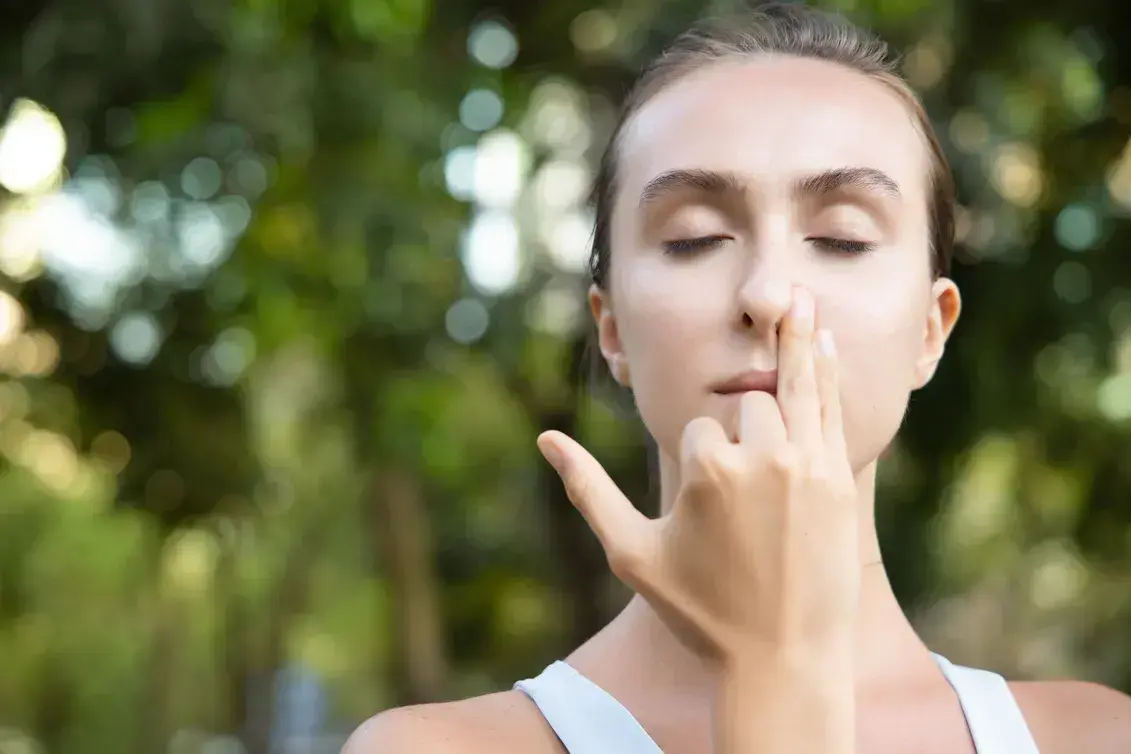
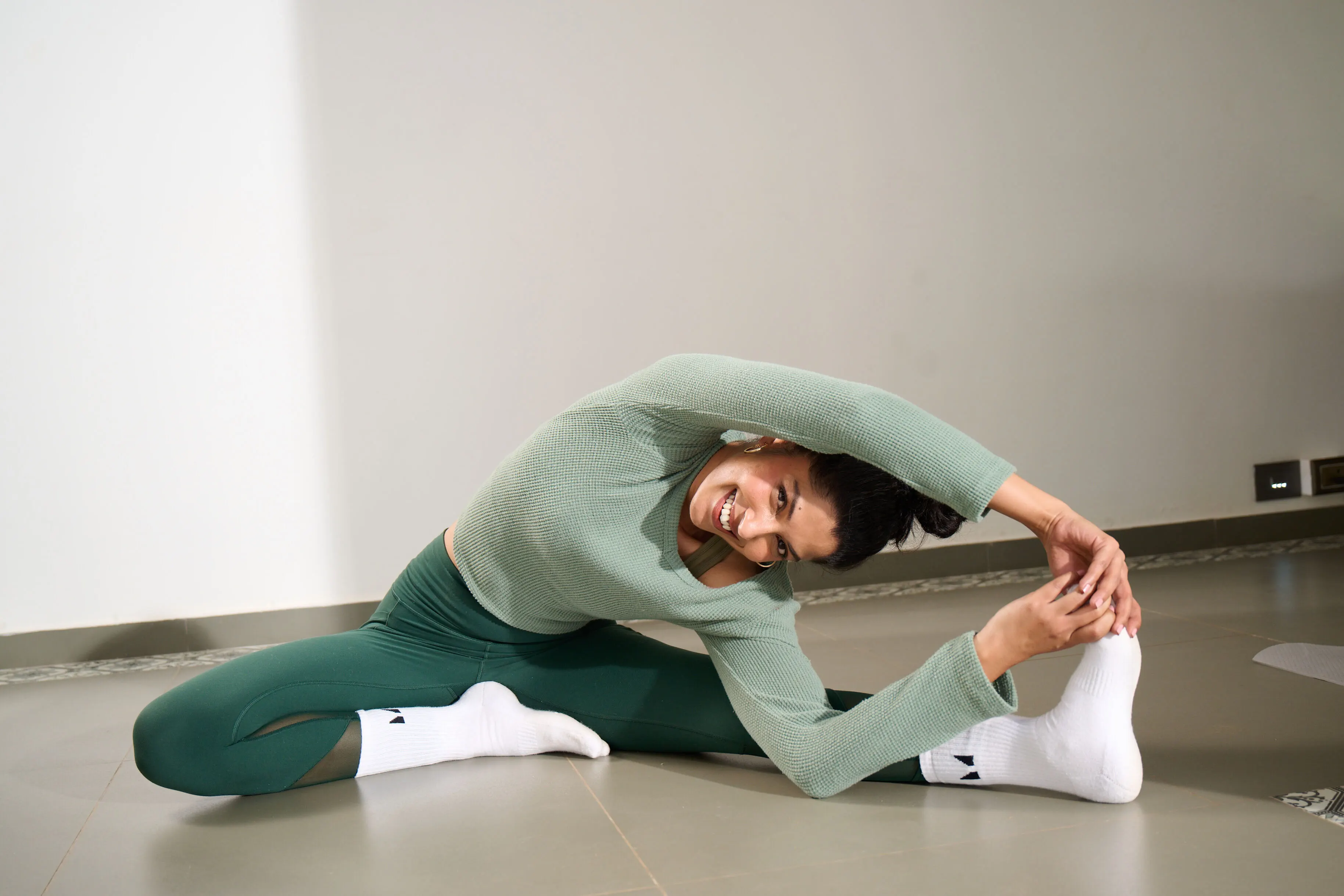










%201.png)

%201.svg)






%201.svg)